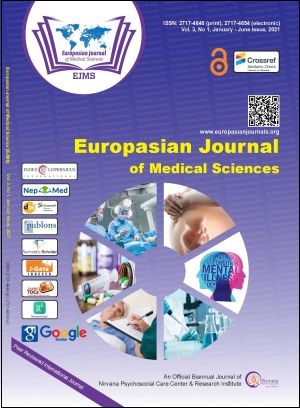Clinico-pathological Analysis of Cervical Pap Smear in Patients Attending Gynecology OPD of a Medical College
Keywords:
ASCUS, Bacterial vaginosis, Candidiasis, Cervico-vaginal infection, LSIL, HSIL, TrichomoniasisAbstract
Background: Cervical cancer ranks the most common cancer among Nepalese women. Cervical and vaginal infections constitute the most common gynecological problems. Through Pap smear screening, early diagnosis, follow up and treatment, morbidity and mortality can be reduced by 70% and 80% respectively.
Methods: This retrospective study was conducted to know the incidence of abnormal cervical epithelial lesions and cervico-vaginal infections. It was carried out in the Outpatient Department of Gynecology at Chitwan Medical College from April 2018 to March 2019. The data were collected and standard statistical analysis done using Microsoft Excel 2007.
Results: The most prevalent cervical epithelial cell abnormality was atypical squamous cells of undetermined significance (3.43%) whereas the least common was low grade squamous intraepithelial lesion (0.21%). The most prevalent cervical vaginal infection was Bacterial vaginosis (12.30%) whereas the least prevalent was Trichomoniasis (0.29%). The majority of the women with epithelial cell abnormality were in the age group of 31-40 years whereas the lowest number in the age group less than 20 years. The highest prevalence of cervical vaginal infection was in the reproductive age group (31-50 years) and the lowest in the age above 51 years. Most of the patients had multiple symptoms like vaginal discharge, genital itching, whereas only (20.17%) visited for routine screening.
Conclusion: Atypical squamous cells of undetermined significance and Bacterial vaginosis were the most common findings in Pap smear test representing abnormal cytology of cervix and cervicovaginal infection respectively.
Downloads
Downloads
Published
How to Cite
Issue
Section
License
Copyright (c) 2021 Renuka Tamrakar, Sabin Ranabhat, Madhu Shrestha, Sandesh Poudel, Sabita Shrestha, Bandana Khanal, Rakshya Joshi, Basant Sharma, Dhan Khatri, Janak Lamichhane

This work is licensed under a Creative Commons Attribution 4.0 International License.
The author(s) retain the ownership of the copyrights for their work published in EJMS without any restrictions. Upon submission, the author(s) grants EJMS a license to publish, including to display, store, copy, and reuse the published content.
License to Publish
By submitting a manuscript to EJMS, the author(s) grant the journal a non-exclusive license to:
- Publish and distribute the content in all formats, media, and platforms (both existing and future), while identifying EJMS as the original publisher.
- Reproduce, display, and store the content in both print and online formats, including institutional and digital repositories.
- Translate, adapt, and summarize the work, including reprints, extracts, and abstracts.
- Develop derivative works based on the original content.
- Include the work in electronic databases and provide links to third-party materials.
Creative Commons Licensing
In addition to EJMS’s publishing rights, authors grant third parties the right to use, share, and distribute their work under the Creative Commons Attribution 4.0 (CC BY 4.0) International License. This allows unrestricted use of the content, provided proper attribution is given to the original author(s) and the journal.

